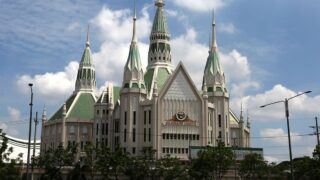THE bush-haired warrior Pancho Villa was already a superstar long before the word was introduced.
But his could actually be a tragedy masked as a love story.
At the height of his fame, there were glowing details on how the great boxer would order his shark’s-skin suits from the same shop at the Escolta that outfitted the debonaire President Manuel Luis Quezon. He was a notorious big spender, flashing a big sunny smile, waving at the cheering streetside crowds from a sports car, pausing at downtown intersections to salute with his derby hat and hand out crisp dollar bills to overwhelmed city policemen.
It was, however, unclear how he ended up in the hospital after his last bout, although he had lost it merely on points.
“Was he badly beaten, po?”
“No, he was shifty, clever, and it was hard to catch him until the end,” the old man explained.
“Was it true he fought after a tooth extraction?” the boy asked.
“They said he died of an ulcerated tooth, a bad molar,” the old man said.
“Don’t you think he died of blood poisoning, po?”
“There could’ve been other causes,” the old man tried to explain.
Francisco had actually been told by his father about rumors that Villa’s lovely wife could’ve run off with another man while the boxer was campaigning abroad.
The old man had refused to believe it himself, mainly when it was added that the other man was the fighter’s manager.
Villa died with his gloves on. But the old man had also heard Villa was no longer his usual self in the days leading to his last fight. The old man wanted to tell the boy that Villa could’ve also died of a broken heart. But knowing his grandson would not understand the strange subject, he chose to close the day’s conversation.
There was a mammoth turnout at the city harbor when Villa’s coffin was lowered through a crane from an international sea vessel that sailed from the United States in the boxer’s final homecoming. Villa’s funeral was attended by wave upon wave of grieving countrymen, a gray ocean of admirers that walked behind his hearse all the way to the La Loma cemetery in the longest, most massive funeral procession witnessed in Manila before the Japanese invasion.


